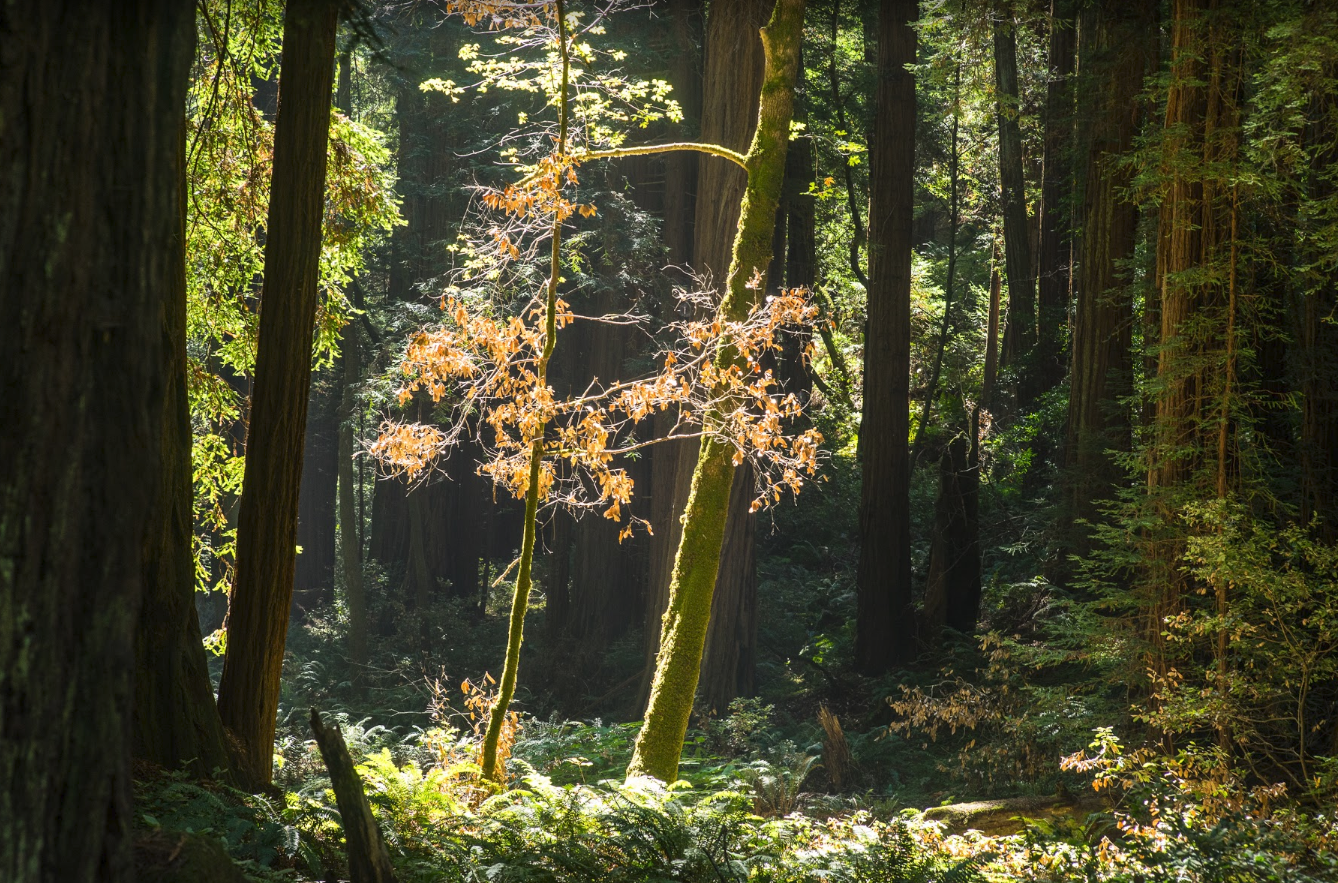Big pieces in the soil biodiversity puzzle: giant viruses
A single gram of forest soil is home to myriads of bacteria, protists and fungi which drive a number of ecosystem functions – they cycle carbon and other nutrients and support the growth of plants, to name a few. The abundance of soil microbes are controlled through intimate, top-down trophic relationships but also from the bottom-up by viruses. While there are various efforts to explore the important role of bacteriophages (viruses which infect bacteria) in altering ecosystem function in soil, the role of viruses targeting protists and potentially also fungi remains largely unexplored.
Forests such as Muirwoods (pictured) are likely home to an abundance of undescribed underground giants. (Photo credit: Frederik Schulz)
Giant viruses – viruses with one hundred times larger genomes, and ten times larger sizes than typical viruses – infect unicellular organisms, in particular amoeba. These viruses have been proposed as a new viral order named Megavirales. Recent environmental surveys revealed that members of the Megavirales are extremely abundant in aquatic environments but only few reports exist on the presence of these viruses in soil. In our recent study “Hidden diversity of soil giant viruses,” we report on a wealth of giant viruses in soil from the Harvard Forest Long-Term Ecological Research (LTER) sampling site.
These viruses were an unexpected but exciting byproduct of a study in which Lauren Alteio and Jeffrey Blanchard (UMass) aimed to pinpoint microbial key players in the sampled soil ecosystem, an effort supported by the Department of Energy Joint Genome Institute Community Science Program (CSP). While analyzing metagenomic data from soil microbial communities we discovered 16 new giant virus genomes. Some of the new viruses (Solivirus, Solumvirus and Sylvanvirus) represented potentially new family and subfamily-level lineages in the Megavirales. Others were affiliated with Klosneuviruses, Tupanviruses and Cafeteria roenbergensis virus, all of which were so far only known from aquatic origins, such as marine and freshwater, wastewater and soda lakes. The new soil giant viruses increased the phylogenetic diversity of the Megavirales by more than 20 percent. One of the soil giant viruses, which we named Hyperionvirus after the world’s tallest tree, had with 2.4 megabases the largest genome of any Mimivirus (“mimi” for “microbe mimicking”) known to date. Taken together, we sampled a great diversity of these viruses from an environment with previously few recorded accounts.
A likely contributing factor to the lack of discovery of these or similar viruses earlier is the comparably small number of metagenomic studies targeting soil. One of the major challenges in assessing diversity and function of microbial communities in soil is the enormous complexity of microbes in this environment. These factors often result in fragmented genome assemblies and poor genome recovery in the soil ecosystem. In our study we employed a new strategy (fluorescence activated cell sorting-based mini-metagenomics) which selects only a small fraction of cell-sized particles in the environmental sample, thus reducing its complexity and improving quality of the metagenome assembly. We also generated conventional bulk metagenomes but despite a much greater read depth we were able to only recover a single giant virus genome from these data. We then surveyed the generated metagenomic data for genes encoding a key viral indicator – the major capsid protein. The discovery of those genes showed that traces of giant viruses could be detected in the bulk metagenomes as well. However, these genes were rather rare compared to soil microbial communities and likely challenging to assemble.
Our study underlines that we can expect to find giant viruses nearly anywhere – we only need to start looking for them. It is surprising that the discovery of such hidden diversity of giant viruses in soil has taken such long time, taking into account the prevalence of protists as a host reservoir in soil. We foresee that this is going to change soon, with the use of a more sophisticated technical repertoire, such as mini-metagenomics. Sequence-based detection of giant viruses has now clearly overtaken the pace with which these viruses can be discovered by isolation. Nevertheless, complementary isolation of giant viruses ideally together with their native hosts is crucial – it will allow us to study the impact of these viruses on their host populations, soil microbial communities and the global carbon cycle.
Have a look at our paper in Nature Communications for further information

